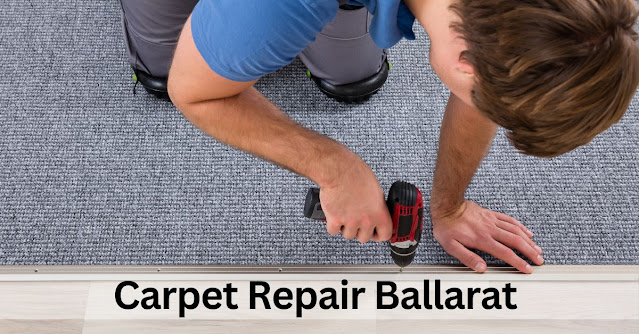What is The Best Way to Restore a Carpet?
- Get link
- X
- Other Apps
Restoring a carpet involves addressing various issues such as stains, wear and tear, and loss of vibrancy. Carpet repair Waitara is a comprehensive guide on the best way to restore a carpet:
1. Thorough Cleaning:
The first step in restoring a carpet is a thorough cleaning. Vacuum the carpet to remove loose dirt and debris. For deeper cleaning, consider professional carpet cleaning services or use a carpet cleaner with a suitable cleaning solution. This process helps revive the carpet's original color and texture.
2. Stain Removal:
Tackle stains promptly using appropriate stain removers. For a DIY solution, mix white vinegar and water in equal parts. Blot the stain, don't rub, and work from the outside in to prevent spreading. Persistent stains may require professional spot-cleaning services for a comprehensive restoration.
3. Patch and Repair:
Address small tears or burns using the patch and blend technique. Cut a matching piece of carpet from an inconspicuous area and affix it to the damaged spot with carpet adhesive. This method seamlessly repairs minor damages, enhancing the carpet's overall appearance.
4. Carpet Stretching:
If your carpet has wrinkles or appears loose, consider carpet stretching. Use a knee kicker and a power stretcher, available for rent at most home improvement stores. Follow online tutorials for guidance, ensuring a smooth and taut carpet surface.
5. Color Restoration:
Faded or discolored carpets can be revitalized through carpet dyeing. Invest in a quality carpet dye kit that matches your carpet's original color. Follow the instructions carefully to achieve an even and vibrant color restoration.
6. Regular Maintenance:
Prevention is crucial for long-term carpet health. Implement regular maintenance routines such as vacuuming, placing rugs in high-traffic areas, and addressing spills promptly. These practices help prevent future damage and maintain the carpet's overall condition.
7. Professional Restoration Services:
For extensive damages or if you're unsure about DIY methods, consider professional carpet restoration services. Experienced technicians can assess the condition of the carpet and provide tailored solutions, ensuring a comprehensive and effective restoration.
8. Furniture Indentation Rescue:
Remove furniture indentations by placing ice cubes directly on the dented areas. Allow the ice to melt, and then use a soft brush to lift the carpet fibers. Vacuum the area, and witness the indents disappear, contributing to a more even and polished carpet surface.
9. Seam Repair:
Address separating seams with double-sided carpet tape. Lift the edges of the carpet, apply the tape to the seam, and press the edges back together. This simple yet effective solution ensures a seamless repair and prevents further unraveling.
10. Pet Damage Repair:
If your carpet has suffered from pet-related damages, trim frayed edges and apply a strong adhesive to prevent further unraveling. For pet stains, use a mixture of vinegar and baking soda to neutralize odors and address discoloration.
In conclusion, restoring a carpet involves a combination of cleaning, repair, and preventive measures. Choose the methods that best suit your carpet's specific needs, and remember that regular maintenance is key to preserving its longevity and appearance.
- Get link
- X
- Other Apps


.jpg)
Comments
Post a Comment